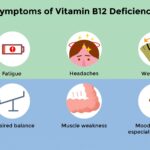Vitamin A deficiency (VAD) is a major public health issue, especially in low- and middle-income countries. This fat-soluble vitamin is essential for maintaining healthy vision, supporting immune function, and facilitating proper cellular communication. Insufficient intake or absorption leads to a range of clinical conditions, most notably affecting children and pregnant women.

Biological Role of Vitamin A in Human Health
Vitamin A, primarily in the form of retinol, plays a vital role in several physiological processes:
- Vision: Critical for the formation of rhodopsin, a pigment in the retina.
- Immunity: Enhances immune response and maintains epithelial integrity.
- Reproduction and Growth: Essential for embryonic development and tissue repair.
- Cell Differentiation: Regulates gene expression and epithelial cell maintenance.
Causes and Risk Factors of Vitamin A Deficiency
Vitamin A deficiency stems from inadequate dietary intake, malabsorption disorders, or increased bodily demand.
Primary Causes:
- Low intake of vitamin A-rich foods: Common in impoverished regions where access to meat, dairy, or fortified products is limited.
- Fat malabsorption syndromes: Conditions such as celiac disease, cystic fibrosis, or chronic pancreatitis hinder absorption.
- Increased requirements: Pregnant and lactating women, and children during growth spurts, have higher vitamin A needs.
Symptoms and Clinical Manifestations
Vitamin A deficiency presents a spectrum of symptoms, ranging from mild to severe, depending on the extent and duration of the deficiency.
Early Signs:
- Night blindness (nyctalopia): One of the earliest detectable symptoms.
- Dryness of the eyes (xerophthalmia)
Progressive Symptoms:
- Bitot’s spots: Foamy patches on the conjunctiva
- Corneal ulcers and keratomalacia: Can result in permanent blindness
- Dry skin and hair, frequent infections due to weakened immunity
In children, VAD contributes to growth retardation and increased susceptibility to infectious diseases like measles and diarrhea.
Global Prevalence and Public Health Impact
Vitamin A deficiency affects over 190 million children under the age of five globally, predominantly in Africa and Southeast Asia.
At-Risk Populations:
- Children under five
- Pregnant and breastfeeding women
- Refugee populations
- Individuals with chronic infections or gastrointestinal diseases
Vitamin A deficiency is a leading cause of preventable childhood blindness and significantly contributes to childhood mortality, especially from infectious diseases.
Diagnosis of Vitamin A Deficiency
Although clinical symptoms are indicative, accurate diagnosis often requires laboratory evaluation.
Diagnostic Measures:
- Serum retinol concentration: Less than 0.70 μmol/L indicates deficiency
- Conjunctival impression cytology (CIC): Microscopic analysis of epithelial cells
- Clinical eye examination: Identifies Bitot’s spots and xerophthalmia
- Dietary assessment: Evaluates nutritional intake patterns
Treatment and Management
Treatment involves both therapeutic intervention and dietary correction.
Therapeutic Dosage Recommendations:
- Children 6–12 months: 100,000 IU orally once
- Children 12–59 months: 200,000 IU orally every 4–6 months
- Pregnant women: Daily low-dose (≤10,000 IU) to avoid teratogenic effects
For severe ocular symptoms, immediate administration of high-dose vitamin A is critical.
Prevention Strategies for Vitamin A Deficiency
Prevention is the cornerstone of addressing VAD, especially in high-risk regions.
Proven Strategies:
- Vitamin A Supplementation Programs (VAS): WHO recommends biannual supplementation in at-risk children.
- Food Fortification: Addition of vitamin A to staple foods such as sugar, flour, and oil.
- Breastfeeding Promotion: Exclusive breastfeeding for the first six months provides adequate vitamin A.
- Dietary Diversification: Encouraging the consumption of:
- Liver, eggs, dairy
- Orange and yellow vegetables (carrots, pumpkin, sweet potatoes)
- Leafy greens (spinach, kale)
- Fortified cereals
Nutritional Sources of Vitamin A
Vitamin A occurs in two forms:
- Preformed Vitamin A (retinol): Found in animal products
- Provitamin A carotenoids (e.g., beta-carotene): Found in colorful plant-based foods
| Food Item | Vitamin A Content (IU per 100g) |
|---|---|
| Beef liver | 9,442 |
| Carrots | 16,706 (as beta-carotene) |
| Sweet potato | 19,218 |
| Spinach (cooked) | 9,377 |
| Mango | 1,082 |
| Fortified milk | 500–1,000 |
Policy and Global Initiatives
Several global health agencies have prioritized the eradication of VAD through integrated programs.
Key Initiatives:
- UNICEF and WHO VAS Campaigns
- Global Alliance for Improved Nutrition (GAIN)
- Scaling Up Nutrition (SUN) Movement
These programs support local governments with supplementation logistics, fortification policy frameworks, and nutrition education.
Emerging Research and Future Directions
Innovative approaches to combat vitamin A deficiency are being explored, including:
- Biofortification of crops (e.g., Golden Rice enriched with beta-carotene)
- Nanotechnology-based delivery systems for improved bioavailability
- Genetic modification of staple crops to enhance nutrient density
Research also focuses on optimizing dosage and frequency for supplementation in different population groups while minimizing toxicity.
Vitamin A deficiency remains a critical nutritional disorder with far-reaching consequences for global child health, vision, and survival. Through coordinated efforts involving supplementation, food fortification, and education, we can drastically reduce its prevalence and impact. Sustainable solutions lie in empowering communities with access to nutritious foods and integrating evidence-based strategies into public health policies.

